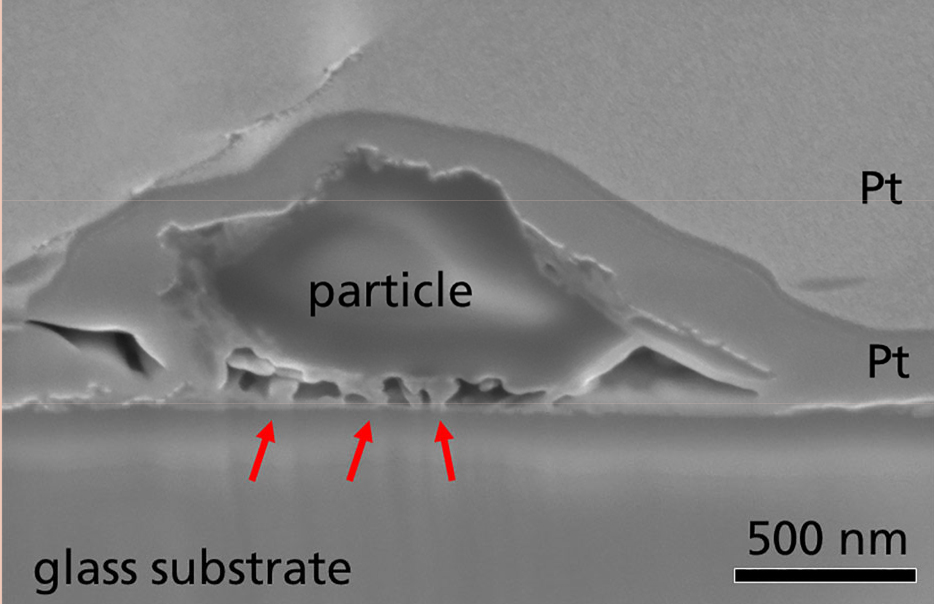To investigate the soiling behavior of solar energy systems like photovoltaics or concentrated solar power, glass samples were exposed to outdoor conditions in Doha, Qatar for one month. Soil formation on the glass was characterized at microstructural level using scanning electron microscopy (SEM) and transmission electron microscopy (TEM). Further, elemental analysis of the crust was done with energy dispersive X-ray spectroscopy (EDX). Small fibrous structures were found on the glass surface and dust particles, providing evidence of a cementation process leading to a strong adhesion of airborne dust particles. In contrast to the common perception, that cementation occurs via the precipitation of salt (sodium chloride) these needle structures were found to be mainly composed of oxides of Si, Mg and Al. This indicates that cementation processes in desert regions are enhanced by the growth of fibrous clay minerals.
 Fraunhofer-Center für Silizium-Photovoltaik CSP
Fraunhofer-Center für Silizium-Photovoltaik CSP